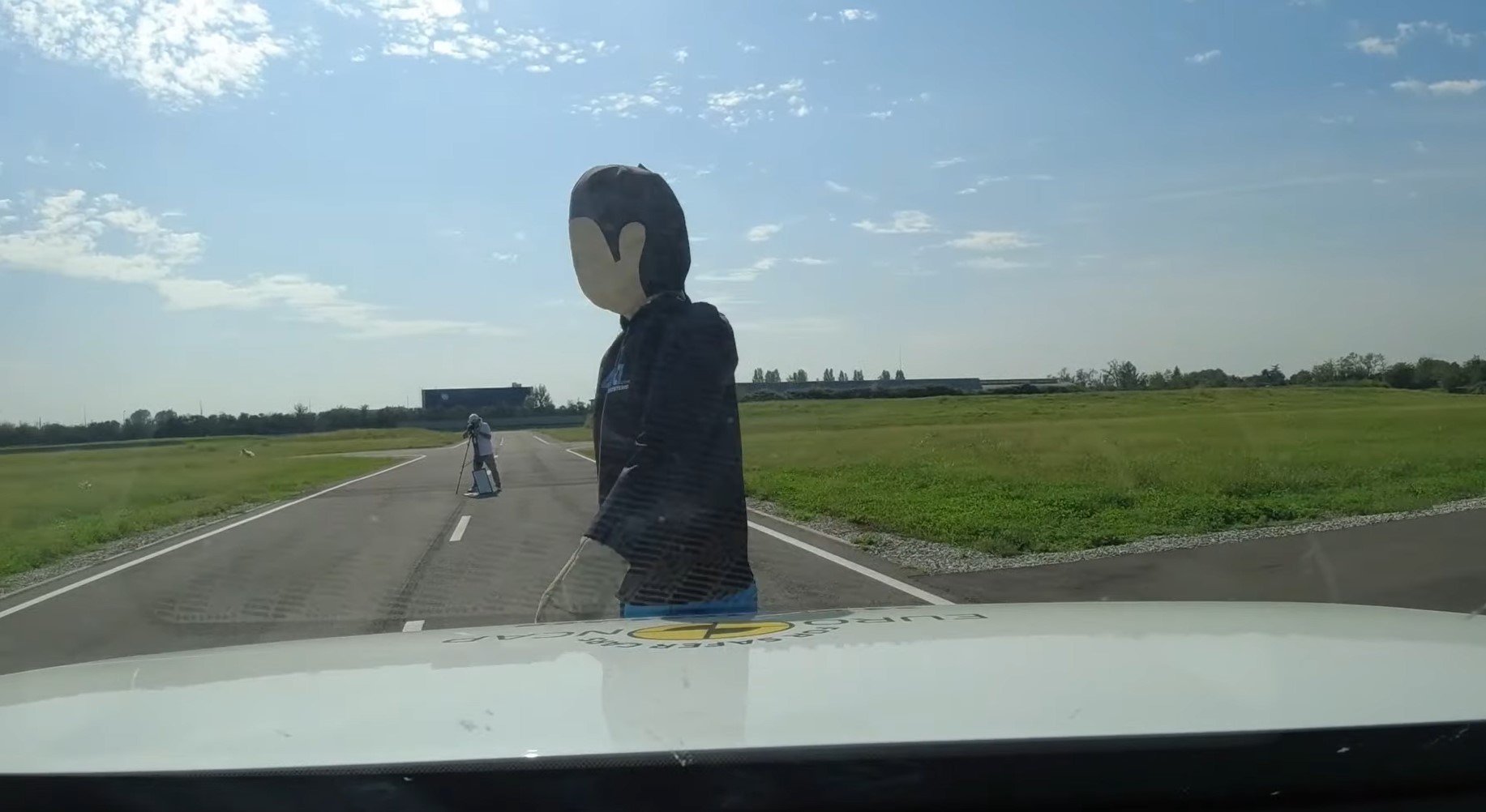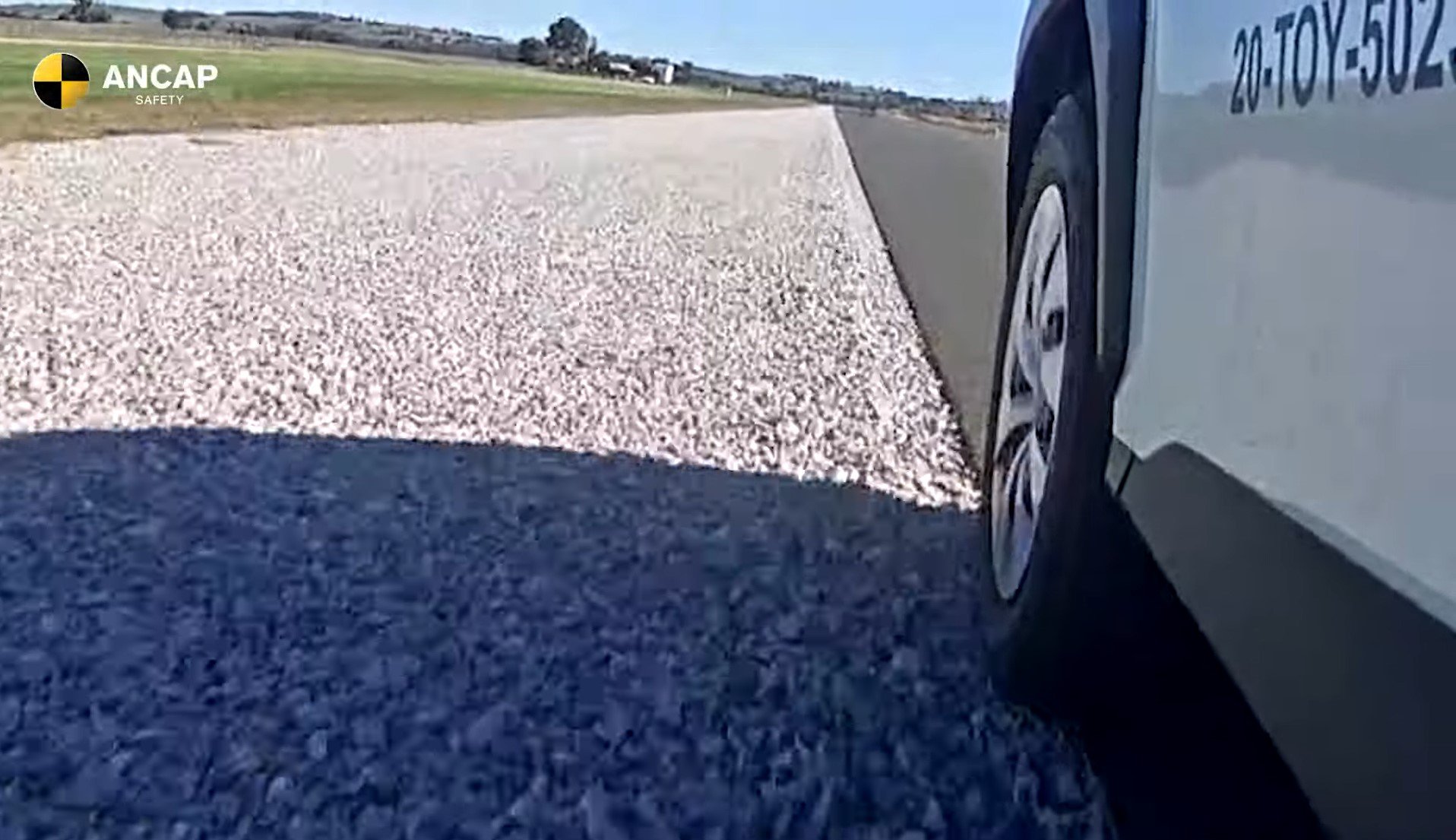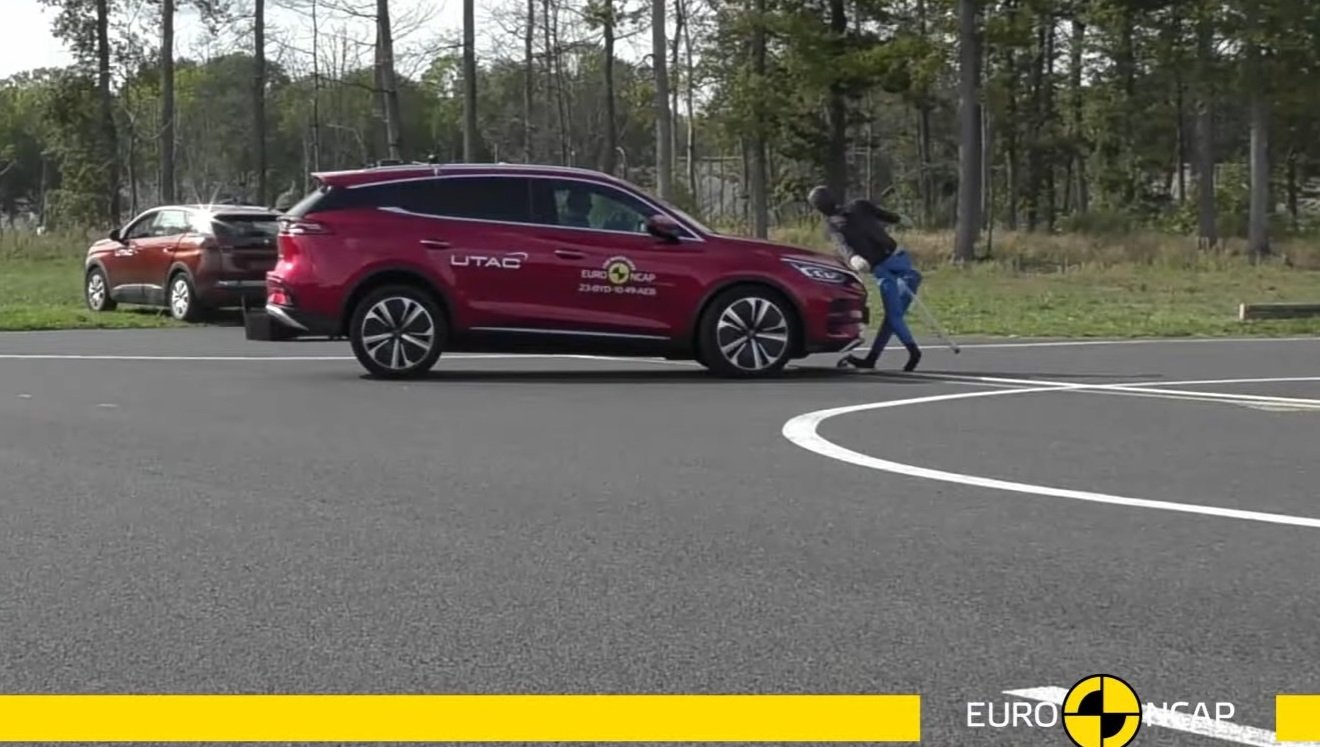DRIVER ‘ASSIST’ SYSTEMS: Why modern car tech sucks
The very worst thing about modern cars are the so-called Advanced Driver Assistance Systems (ADAS). Here’s why they’re so bad they actually put you in danger before keeping you safe…
Advanced Driver Assistance Systems, or ADAS as it's glibly known by the industry, should be called the Advanced Driver Annoying System because that’s a far more accurate description of what it does in reality.
If you are any kind of advanced driver, that's exactly what this technology manages to do, on balance. ADAS sucks; adaptive cruise control gets a free kick here from me for being both reliable and not sucking, but the majority of the features packaged up into these systems - they’re rubbish.
In this report we’re going to unpack exactly why ADAS is beyond useless and in some instances, is downright dangerous - and this goes much farther than you probably think…
Just to kick things off, there's no evidence that this automotive technology actually saves any lives. Show me the independent report full of empirical evidence collected over a long period of time and using a large body of collated data.
The only aspect here that sucks harder than ADAS are the crash testing so-called ‘authorities’ trying to make themselves look good (to prospective governmental department donors) by pushing these systems so hard down the throats of consumers.
Endless useless warnings are a hallmark of all modern cars. My Triton beeps its freaking head off whenever the engine starts without the seatbelt on, and in my quite suburban street doing 40km/h, if there's a parked car as I round the bend (which there always is), the collision warning goes off repeatably - dependably - with exactly the same repeatable dependability that there's zero chance of me hitting anything.
Death Trap Utes: ANCAP goofs on Navara, Triton, Pajero Sport ratings >>
No doubt you’ve had similar experiences, or know someone who has. A modern car is an insult to human factors engineering best practice, and this situation is only getting worse. Cars would be better without most ADAS features, because there is no evidence that ADAS is even saving lives.
You’ve seen the TV commercials where some inattentive idiot is fumbling their un-lidded coffee around in the car when some supposedly blind, deaf unsupervised child crosses the empty street, alone. This kind of stuff:
These ads are what carmakers use to sell their expensive toys to you - it has nothing to do with empirical fatal crash data that is screaming for ADAS features in your new car.
Carmakers, regulators and taxpayer-funded crash test organisations have a lot of skin in the ADAS game. Billions have been spent by carmakers developing it, regulators are so keen to sex up the pot of gold at the end of the road trauma rainbow (campaigns like ‘Vision Zero’ - remember that?), all the lives saved and the injuries prevented with this exciting new ADAS tech you must have in order to be safe. So buy that super safe new car, wont you?
These are the same agencies (both public and private) that won't improve driver training, can't get the worst recidivist drivers off the road (permanently), don't cut down even the most dangerous roadside trees or otherwise improve third rate civil engineering.
The bullshit technology of ADAS has become their freaking religion, or at least it's like a religion, functionally, because you're expected to believe and yet there's no evidence. And the crash test groups, they have made ADAS a core part of their five-star safety rating combo meal deal - still with no independent, peer-reviewed supporting evidentiary research.
Evaluating ADAS just gives these organisations exciting new ways to spend your taxpayer funds, after all. None of these ADAS stakeholders will tell you the truth ADAS is kind of a nice idea but the implementation is ever so slightly shit, and there's (still) no evidence all of this false alarming, inconvenient, distracting, expensive, high-tech, in-car excrement actually makes driving safer.
Over in the United States, the National Safety Council has a full page on its website explaining just how ‘exciting’ ADAS really is:
Confirmation bias gold medal winners, right there. Then they go on to claim various unicorn-style outcomes for example that quote
“ADAS technologies have the potential to prevent 20,841 deaths per year
This is the USA, remember, so that's roughly half the US road toll and apparently, of those 20,000+ deaths, lane keeping assistance might save about 15,000 people, and autonomous breaking for pedestrians might save another 4000 lives. It might, but nobody really knows because there's no data. It's basically the same as the power of prayer.
If there were evidence that any of this ‘life saving’ were happening for real, the road toll would be diminishing would it not? In the same way the road toll here in Australia tumbled as a direct result of mandating seatbelts be worn while driving in Victoria in 1970.
I think we could all live with the inconvenience of ADAS, but the road toll in the US jumped 10.5% in 2021, and this was the fastest increase ever. This is an anti-advertisement for the life-saving prowess of ADAS which is at-best a rose-coloured maybe, cloaked in the virtue of hope and guesswork. And we are all paying for this technology, and enduring it, endlessly.
In the land of the First Amendment, of which are the finest words ever enshrined constitutionally, by the way, a man named David Harkey is at the wheel of the Insurance Institute for Highway Safety (IIHS). They’re a safety agency funded by insurance companies and that means they've got three things: deep pockets, kickarse test facilities and, quite importantly, all of the crash data.
Harkey said:
Mr Harkey from the IIHS said that in a blog post here >> if you’re interested to check the source material.
The term ‘partial automation’ means ADAS, essentially, and specifically refers to things like ‘lane keeping assistance’, ‘adaptive cruise’ and ‘collision avoidance/emergency braking’.
Then there’s ‘adequate safeguards’ which means alleged features like so-called ‘driver monitoring systems’. But I think we should call it by a far more accurate name, ‘driver stalking systems’ where the car, which is looking at you through a camera, monitors the tilt of your head and your grip on the wheel, where your eyes are looking and things of nature, and it makes ongoing assessments about your fitness to continue driving. It then beams it all back to the mothership.
That's in every carmaker's creepy lack-of-privacy >> policy, spying on you, in case you're wondering. It's all a bit Hal9000, only badly implemented.
But the poor implementation of these so-called driver assistance systems also allows for ambient human stupidity to creep in and undo the purported good they overstate these features are capable of doing:
So far, even the most advanced systems require active supervision by the driver.
However, some manufacturers have oversold the capabilities of their systems, prompting drivers to treat the systems as if they can drive the car on their own
- IIHS
And we’re not just referring to malignant Teslas and their ignorant book-reading, sleeping or procreating owners. We’re talking about systems that are being being rolled out by every carmaker without the maturity of the technology that makes it fit for widespread human consumption as a supplement for our own task-mastering and skill improvement.
As humans, it’s harder for us to remain vigilant when we’re watching and waiting for a problem to occur, than it is when we’re doing all the driving ourselves.”
- IIHS
A 2019 study by the American Automobile Association (the AAA) found that pedestrian detection ADAS is completely freaking useless at night, which is when three-quarters of pedestrians actually get hit. Go figure.
You might argue that the technology will rapidly improve, like night vision that’s coming to a Mercedes S-Class near you - even though they did that 15 years ago and it still hasn’t metastasised into the wider market. Go figure.
I'd respectfully suggest that full autonomy has been 12 to 18 months away now for more than a decade, and that's straight from the lips of Electric Jesus, and he never lies.
Even if they can mature ADAS tomorrow, there's still the inertia in the traffic fleet; millions of cars each lasting 10 to 20 years to replace. That's rather a long wait if you plan to be dancing down the median strip after a big drink next Friday night.
Then there are still the dangerous drivers still on the roads, the imperfect civil engineering, and ADAS is not a cure for that. And even solutions to some problems can create the opposite resulting effect. How? Keep reading…
I'll help you save thousands on any new vehicle here
Just fill in this form. No more car dealership rip-offs. Greater transparency. Less stress.
TWO STEPS FORWARD…
The Peltzman Effect >> is what happened in the 1960s when seatbelts were introduced with the intention of reducing the risk of driver death and injury, but in fact created a lax driving population that thought they were less vulnerable and could therefore exhibit even worse driving behaviour, effectively negating the safety gains made by having said seatbelts.
It also meant pedestrians were at greater risk due to the increased indifference to safe driving practices. Whoops! This is potentially what we’re seeing with the rapid rollout of ADAS systems without the rigorous counsel of engineers and the crash data to solve specific problems with precise, carefully implemented solutions based on evidence.
This behaviour is called ‘risk homeostasis’, or occasionally the Peltzman Effect, and this feedback effect is already occurring as a result of ADAS. Perhaps you are tempted to check your messages on your phone because you might think it's safe enough to do so due to your car having lane keeping assistance, pedestrian detection and automatic braking. Pro Tip : it's not safe, it’s very dangerous.
The Peltzman Effect essentially means that any safety benefit is, to some degree, negated by the adaptation of humans to being in a system with allegedly superior technology, ie notionally ‘safer technology’.
And here lies the problem. We haven’t done the research and produced, with impunity, the evidence that indicates we need these systems. So we’re already getting the feedback effects.
The point here is that instead of trying to improve the driving process and teach people to not crash themselves or kill others, we’re also not studying how good human drivers actually perform. Statistically, we all get home safe considering the amount of distance we all cover every year without having a single crash. Overall, humans are equally very good.
A study in October 2021 by the IIHS found that having adaptive cruise control increased the share of drivers who exceeded the speed limit by 18 per cent. Safer tech: more risky behaviour; Sam Peltzman. Check out that adaptive cruise research here >> and an associated report by the IIHS on ACC ineffectiveness here >>
Carmakers do so talk-up this tech out of all proportion to the benefit.
Autonomous emergency braking, supposedly the next road safety silver bullet, they can't even just call it what it is: automatic braking.
The way many of these systems operate gives people the impression that they're capable of doing more than they really are.
- Alexander Mueller, IIHS research analyst
Mr Mueller said that in the same blog post as Mr Harkey earlier.
This study by the American Automobile Association in September of 2022 found that AEB prevented 85 per cent of crashes in a particular test scenario at about 50km/h (the test was done in MPH). I’d suggest 85 per cent is an awesome result,
But at a third faster the speed, at approximately 64km/h, the crash prevention rate fell to 30 per cent and I’d further suggest that is a massive inversion within a very small window of operational speed. I'd rather prevent the far more dangerous crashes at higher speeds, if there's a choice.
Researchers at San Jose State University found in 2022 that ADAS equipped vehicles were less likely to crash at four-way intersections, but more likely to hit pedestrians and cyclists. I'm not so sure that's a net benefit.
There's also a dark side to easing the burden of driving with, for example, adaptive cruise and lane keeping assistance. If an activity becomes more enjoyable you'll probably do more of it and risk is more or less proportional to exposure, if everything else is equal.
Also, a 2022 study of truck drivers found that they were significantly slower to react and intervene when an automated system had been doing the heavy cognitive lifting of driving. Even the US Department of Transportation found in 2016 that pilots were too reliant on automation:
the agency is missing important opportunities to ensure that Pilots maintain skills needed to safely fly and recover in the event of a failure with flight deck automation or an unexpected event
That study on the pilots concluded:
Reliance on automation is a growing concern
The anecdotal evidence there is, I once asked the chief flying instructor for Blackhawk helicopter training with the Australian Army about the parallels and the differences between military flying and driving. He told me a lot of interesting things about how they work, including that at 5000 feet or thereabouts, there's often a lot of time to sort operational problems out. But on the freeway, not so much.
But even when drivers understand the limitations of partial automation, their minds can still wander as humans
It's harder for us to remain vigilant when we're watching and waiting for a problem to occur than it is when we're doing all the driving ourselves
Alexandra Mueller from the AHS there, again, talking complete sense on this issue. The inherent clunkiness and unresearched effectiveness of ADAS, working badly if at all and undermining human vigilance -this matters.
This really matters if, for example, you go to ANCAP’s website today to try to decide on the safest car for you and your family because there are now many, many cars assessed by ANCAP that crash just like a five-star car but they get four stars or less because of some perceived ADAS deficiency >>.
In my estimation, ANCAP and its big sister EuroNCAP have officially lost the plot. They're no longer a credible, reliable source of public safety information. I'd categorise the whole thing as being very confusing today and so off-target that it is next to useless.






















A Kia Stonic is the next big thing in SUVs if you’re looking for modest size but with all the benefits of a normal hatchback. It’s safe, economical and affordable, making it an ideal first car.